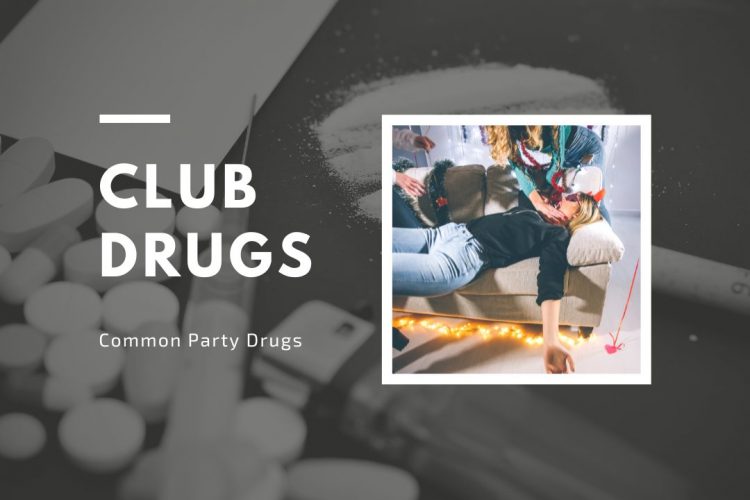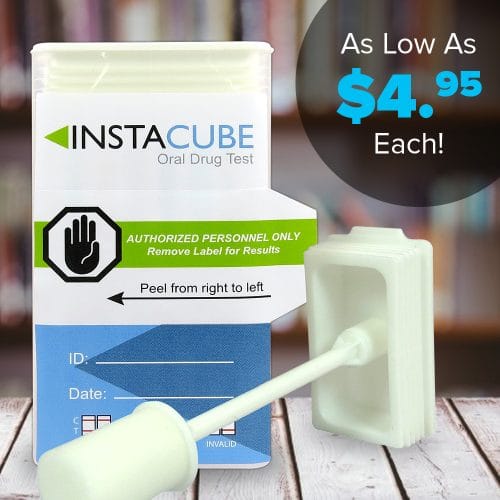Club drugs are psychoactive drugs that teens and young adults frequently use during gatherings, bars, nightclubs, and concerts. They alter mood and consciousness, making people feel less hesitant and more gregarious. Individuals attending parties may be given drugs by friends or strangers in the crowd. While all illegal narcotics can be deadly, club drugs have the potential to be exceptionally dangerous since kids may overdose or take the drug without knowing what the effect is.
GHB, Rohypnol, Ketamine, MDMA (Ecstasy), Methamphetamine, and LSD are the most regularly used club drugs. Ecstasy, Methamphetamine, and GHB are the most deadly club drugs. When you understand the most popular club drugs, you can be proactive and help adolescents stay safe. The majority of these drugs are prohibited and can result in catastrophic, even deadly, injuries or side effects.
Young people enjoy having a good time. They will sometimes go to extremes, introducing drugs that they believe will help them have a better time. However, these particular pharmaceuticals, known as party drugs, have negative consequences that can change someone’s life. Party drugs affect the brain and central nervous system, they can cause cognitive alterations, which affect someone’s emotions, judgment, and consciousness.
Parents and young people must be aware of the dangers of these drugs and take the necessary actions to prevent the use abuse of these drugs. Depressants, stimulants, opioids, and hallucinogens are examples of psychoactive substances that impact the mind and behavior. They fall into three categories.
- Users of hallucinogens may see, hear, or feel things that are not real. They weaken judgment and can induce memory loss.
- Stimulants spur the brain and central nervous system, increase alertness, alter motor activity, and decrease fear and inhibitions.
- Depressants reduce arousal and reaction time by slowing down the central nervous system.
1-Ecstasy:
MDMA (3, 4-methylenedioxymethamphetamine), also known as ecstasy, is a psychoactive substance that functions as a stimulant and hallucinogen. It is also known as XTC, X, E, Adam, Eve, clarity, hug, beans, love drug, lovers’ speed, peace, uppers, or molly by its users.
MDMA is typically consumed orally as capsules or pills, but it can also be crushed and snorted. It is infrequently smoked but is rarely injected. Ecstasy is often used in combination with other substances such as alcohol and marijuana.
Ecstasy causes sensations of enhanced energy, happiness, emotional warmth, and time, perception, and causes tactile experiences to be distorted.
Side Effects Of Ecstasy:
Ecstasy is harmful to one’s overall health and, in rare cases, fatal. It Increases heart rate and blood pressure. Its side effects are:
- Muscle tension
- Involuntary teeth clenching
- Nausea
- Blurred vision
- Faintness, chills or sweating
Ecstasy, in excessive quantities, can impair the body’s ability to regulate temperature, leading to a sudden increase in body temperature (hyperthermia), which can lead to liver, renal, and cardiovascular system shock or damage, which can be fatal.
2-Methamphetamine:
Methamphetamine is a highly addictive and potent chemical drug. It affects the body’s central nervous system when used as a stimulant. Methamphetamine is also known as meth, blue, ice, and crystal on the street. Methamphetamine has no legal applications. It is a synthetic drug that produces an immediate euphoric effect.
According to the National Institute on Drug Abuse, methamphetamine was first utilized as a nasal decongestant and bronchial inhaler in the early twentieth century. Its stimulant characteristics caused increased activity, decreased appetite, and an overall sensation of joy. However, due to its potency, it had a longer-lasting and more damaging effect on the central nervous system than anticipated.
Side Effects Of Methamphetamine:
- Paranoia
- Irritability
- Confusion
- Teeth decay
- Itchiness and excessive scratching
- Acne and sores
- Convulsions
- Damage to the liver
- Stroke
- Immune deficiency
- Death
Methamphetamine’s toll on the body has made it one of the most hazardous narcotics in the world. According to the National Institute on Drug Abuse, more than 1.6 million Americans use methamphetamine every year.
3- GHB (Gamma-Hydroxybutyrate):
G, Easy Lay, Liquid Ecstasy, Liquid X, Grievous Bodily Harm, Georgia Home Boy, Goop, and Scoop are some of the slang terms for GHB. GHB is a drug that affects the central nervous system. It’s intended use is the treatment of narcolepsy (daytime sleepiness).
GHB is often taken orally, as a liquid or powder. GHB dissolved in a liquid, such as water, juice, or alcohol means that GHB can be brought into clubs or other gatherings easily and it also means that drinks can be spiked with GHB. GHB is abused because of its intoxicating properties. It is most known for being inserted in an unsuspecting victim’s alcoholic drink to inhibit resistance to sexual assault, leaving the victim ignorant of what has occurred.
Bodybuilders have utilized GHB to aid in fat loss and muscle gain because it has anabolic properties. When GHB is abused, it produces euphoria, loss of inhibition, suggestibility, and physical sedation. It may also result in forgetfulness. Because of these characteristics, GHB has the potential to be used as a “date rape” drug.
Side Effects Of GHB:
The effects of GHB, according to the Drug Enforcement Agency (DEA), make users “susceptible to sexual assault and other criminal activities.” When mixed with alcohol, GHB’s depressive effects are amplified. It can lead to respiratory issues. The higher dose of GHB can cause
- Unconsciousness
- Seizures
- Reduced heart rate
- Slowed respiration
- Lower body temperature
- Vomiting
- Nausea
- Coma
- Death
GHB links to hallucinations and aggressive conduct. When consumers quit the drug after a long period of use, withdrawal symptoms might include insomnia, anxiety, tremors, elevated heart rate, elevated blood pressure, and sometimes psychotic thoughts. GHB overdose can also cause “seizures, reduced heart rate, extremely delayed respiration, lower body temperature, vomiting, nausea, unconsciousness, and death,” according to the DEA fact sheet.
Preventing abuse of dangerous club drugs requires a commitment to testing for common party drugs along with a recognition of the spaces they are regularly consumed. Party drugs can be highly addictive, the substances can be contaminated, and the dosages could be wrong, all of which leads to potentially life-threatening events.
References:
- Ascendhc. 5 Most Dangerous Club Drugs. Retrieved from www.ascendhc.com: https://www.ascendhc.com/teen-rehab-blog/5-most-dangerous-club-drugs
- Destinations For Teens. 3 OF THE MOST DANGEROUS PARTY DRUGS. Retrieved from www.destinationsforteens.com:
- Lasencinas Hospital. What Are Club Drugs and Why Are They Dangerous? Retrieved from www.lasencinashospital.com:
- Medlineplus. Club Drugs. Retrieved from www.medlineplus.gov/: https://medlineplus.gov/clubdrugs.html
- North Point Washington. Top 10 Most Dangerous Party Drugs. Retrieved from www.northpointwashington.com:



